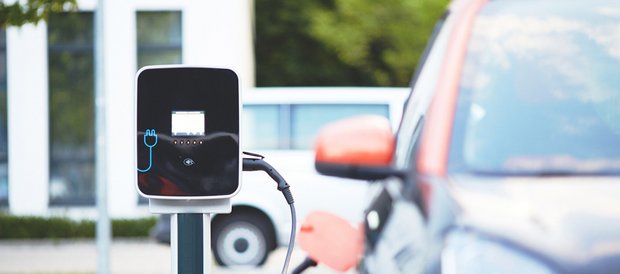Establish and expand charging infrastructure
with existing grid connection, without power peaks
In the commercial sector, mobility is changing fundamentally, with many companies converting vehicles such as forklifts, transport vehicles and company cars to electric drives. With additional energy requirements - currently up to 170 kW for fast chargers and soon up to 250 kW per charging point - the risk of local power peaks increases significantly. These are a significant cost factor on the electricity bill, especially against the backdrop of steadily rising grid charges.
In addition, the additional power required by modern charging stations can often not be provided by the supplier because, especially in older industrial or residential areas, the future power requirements of charging parks were not foreseen during planning.
Some manufacturers of charging stations offer integrated load management, but this can usually only reliably control their own charging technology. A comprehensive load management system that takes into account all of a company's cosumers is much more efficient in terms of costs.
Future-proof e-mobility infrastructure
Whereas manufacturer-specific load management integrated into charging stations only monitors their own charging points in a limited number, EOS dynamically and synchronously regulates all charging stations across manufacturers as part of the overall optimization of all consumers in the company.
Since company-wide load optimization is realized with EOS, the maximum power demand does not usually increase despite new charging points, and the grid charge costs remain low. In addition, a charging infrastructure can be set up without the need for expensive expansion of the existing grid connection, since the central overall optimization prevents a higher grid load.
Quicklinks
More EOS features
Maximize load management by energy storage
EOS: State funding
Secure the subsidy of up to 40% of the investment
EAS Energy Management
Perfect combo for maximum energy and resource efficiency
EOS/EAS optimization add-ons
Powerful add-ons for sustainable operations and processes
EOS/EAS application areas
Optimization opportunities in your industry
dibalog full service
Consulting, implementation, support, training
![[Translate to English:]](/fileadmin/_processed_/3/2/csm_Kopfgrafik_EnergieVerkeh_Lastmanagement_341e74edcf.jpg)
